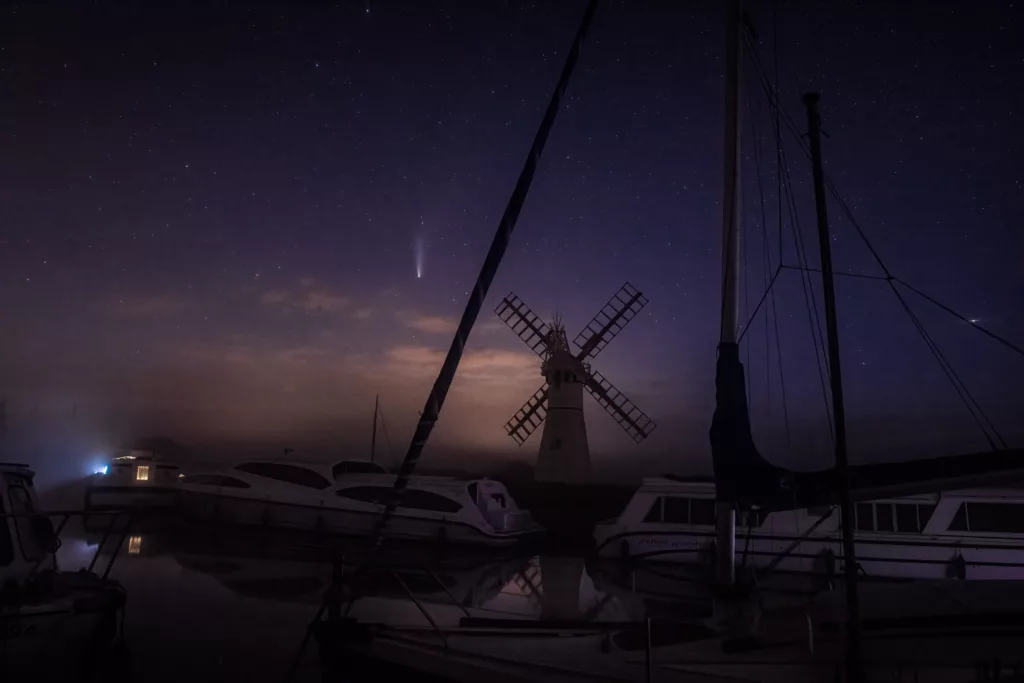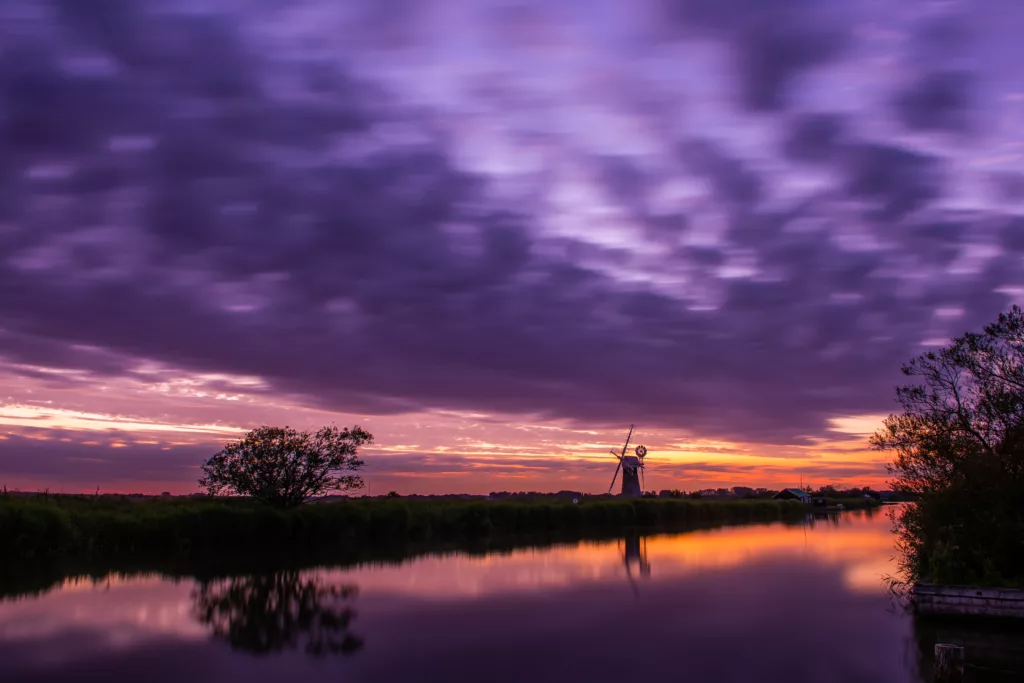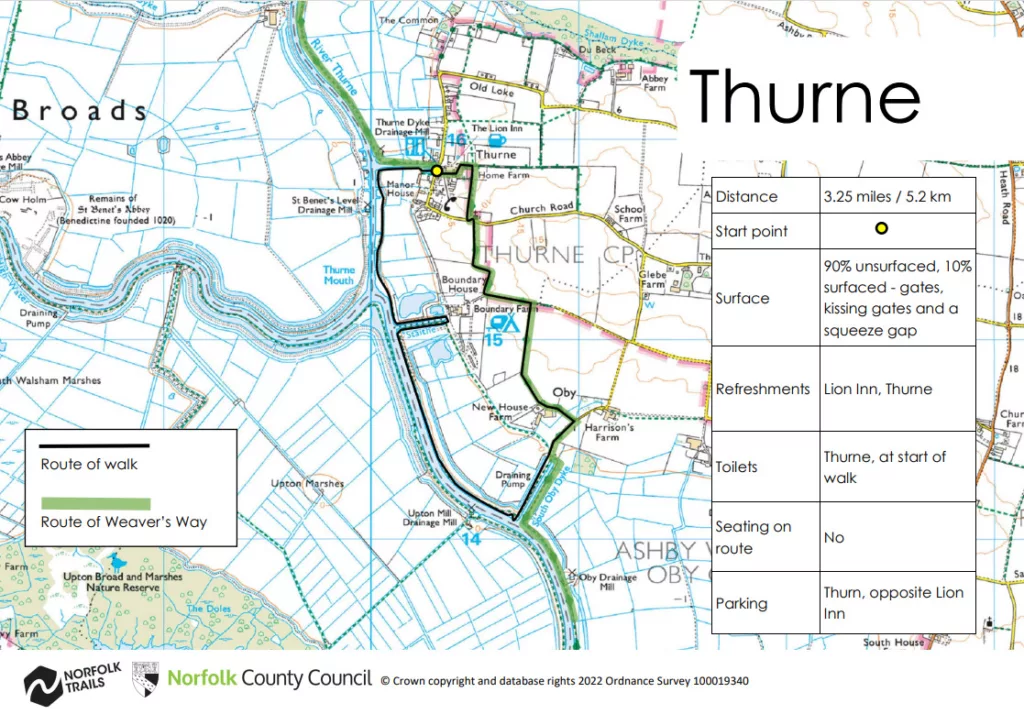The Broadland drainage windmills form a distinctive characteristic feature of the landscape, many are now home to white owls and jackdaws, but not all, some with a little imagination can take you back to a past age of turning sails and marsh men. The white painted Thurne Mill one of the best known of all, sometimes to be seen with its sails turning and a favourite of photographers. A mill was first built on the site in conjunction with the parliamentary enclosure of the marshes in 1820 but later rebuilt. The present mill clearly exhibits the practice of heightening (or haining to use the local term) the mill tower when it was modernised to carry the newer type of sails.
Across the river from Thurne is its partner in the landscape, St Benets Level mill, an eighteenth-century tower mill. Its name refers to the nearby St Benet’s Abbey site. Both St Benet’s Level and Thurne mills have suffered catastrophic gale damage in their working days but fortunately have been restored.
Further down river is Upton mill, a tall tarred black tower built because of parliamentary enclosure of the Upton Marshes in 1802. A later steam engine house survives alongside with the marshman’s bungalow to the rear. Further downriver can be glimpsed the derelict remains of Oby Mill, one of the oldest on the Broads, it used to display a date of 1753 on its tower.
The settlement of Oby (with Ashby) is one of Norfolk’s lost villages, now largely scattered farmsteads. Thurne itself remains a small settlement. Until a major sale in 1934 it was essentially an estate village owned by the Nightingale family. The White House, their shooting lodge has become the Lion Inn, however, the anticipated growth following the sale did not occur. Thurne Church, which sits on a rise overlooking the small settlement is a modest fourteenth-century structure, known for its circular squint reputedly trained on St Benet’s Abbey.
Thurne Dyke, Boundary Dyke and Oby Dyke are all boat dykes connecting upland with river and allowed trading vessels to load and unload but today are filled with leisure boats in the summer season.



